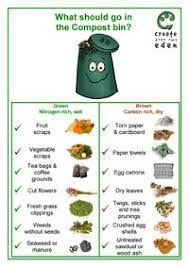ANAMALAI TIGER RESERVE
Anamalai Tiger Reserve (ATR) is located on the southern side of the South Western Ghat
landscape. It is surrounded by Parambikulum Tiger Reserve on the East, Chinnar Wildlife
Sanctuary and Eravikulum National Park on the South Western side. The reserve is also surrounded
by Nenmara, Vazhachal, Malayattur and Marayur reserved forests of Kerala. The Kariyan shola,
Grass hills and Manjampatti of Anamalai Tiger Reserve has been identified as a world heritage site
by the UNESCO.
Anamalai Tiger Reserve was declared as a Tiger reserve in the year 2007. There are two Divisions
and six ranges in this Reserve. The ranges found in this reserve include Amaravathi and Udumalpet
falling in Thiruppur Division and Pollachi, Ulandy, Valparai and Manamboli in Pollachi Division.
Area of the Tiger Reserve
Core/critical tiger Habitat : 958.59 sq km
Buffer/Peripheral Area : 521.28 sq km
Total : 1479.87 sq km
Location
Latitudes : 10O 13.2’ N to 10 O 33.3’N
Longitudes : 76 O 49.3’ E to 77 O 21.4’ E
Habitat Attributes
Flora
Around 2500 species of angiosperms are found in the Anamalai Tiger Reserve, with several species
of Balsam, Crotalaria, Orchids and Kurinchi. The reserve is rich in wild relatives of cultivated
species like mango, jackfruit, wild plantain (Musa species), ginger (Zingiber officinale), turmeric
(Curcuma longa), pepper (Piper longum), cardamom, solaipuli, nutmeg, cinnamom, amla
(Phillanthus emblicus), jasmine (Jasminum species), drumstick, yams, rice, strawberries and wild
Fauna
The reserve supports several species of endangered wild animals. There are 70 species of fishes,
more than 70 species of amphibians, 120 species of reptiles, 300 species of birds and 80 species of
mammals. The important mammals include: Asiatic elephant (Elephas maximus), Sambar (Rusa
unicolor), Spotted deer (Axis axis) Barking deer (Muntiacus muntjac), Mouse deer (Tragulus
nigricans), Gaur (Bos garus), Nilgiri tahr (Hemitragus hylocrius), Lion Tailed Macaque (Macaca
silenus), Nilgiri langur (Trchypithecus johnii) and Common langur (Semnopithecus entellus). Other
common wild animals include: Wild pig (Sus scrofa) and Sloth bear (Melursus ursinus).
In general, the wild animals of the reserve include: Jackal (Canis aureus), Wild dog (Cuon alpines),
Indian fox (Vulpes bengalensis), Tiger (Panthera tigirs), Leopard (Panthera pardus), Jungle cat
(Felis chaus), Leopard cat (Prionailurus bengalensis), Smooth coated otter (Lutrogale
perspicillata), Small clawed otter (Aonyx cinerea), Nilgiri marten (Martes gwatkinsii), Small Indian
civet (Viverricula indica), common Palm civet (Paradoxurus hermaphrodites), Brown palm civet
(Paradoxurus jerdoni), Grey mangoose (Herpestes edwardsii), Ruddy mangoose (Herpestes
smithii), Indian Brown mangoose (Herpestes fuscus), Stripe-necked mangoose (Herpestes
vitticollis), Indian pangolin (Manis crassicaudata), Black naped hare (Lepus nigricollis), several
species of rodents and bats.
Tiger Status
The reserve has a good presence of tigers and co-predators.
Core
Camera trapping in 698 sq.km. of the tiger reserve have shown the presence of a minimum of 15
tigers in the sampled area.
Buffer
The Buffer area of Anamalai Tiger Reserve is a 10 kilometer belt of revenue villages and hamlets,
along the Northern boundary, adjoining the plains of Pollachi and Udumalpet taluks. In the East, it
shares a common boundary, including a 5 kilometer belt falling in two adjoining divisions, viz.
Kodaikanal and Dindigul.
The interstate boundaries from West, South and East are shared with the Nemmara Forest Division,
Parambikulam Tiger Reserve, Vazhachal Forest Division, Malayatoor Forest Division, Munnar
Forest Division, Eravikulam National Park and Chinnar Wildlife Sanctuary. The Parambikulum
Tiger Reserve is within a radius of 10 kilometers of the reserve and is contiguous.
Wildlife Corridors
There are several wildlife corridors which include: Navamalai near monkey falls, Punachi in
Valparai range, Waterfall, Siluvaimedu, Nadu Ar, Sethumadai–Nenmara and 9/6–Chinnar check
post. Wild animals like elephant, gaur, tiger, leopard and wild dog use these corridors for their
seasonal movement within the reserve, and also between the reserv
IMPORTANT POINTS TO REMEMBER
●Anamalai Tiger Reserve is tropical jungle, shola forest and grassland.
●It is spilled over the Western Ghats into Kerala between Kodaikanal and Coimbatore.
●Threatened species of mammals in the sanctuary include:
1)Endangered Bengal tiger, Indian elephant, Indian leopard
Nilgiri tahr and lion-tailed macaque,
2)Vulnerable brown mongoose, gaur, Malabar spiny dormouse, Nilgiri langur, rusty-spotted cat, sambar deer, sloth bear and smooth-coated otter,
3)near threatened Indian giant squirrel, Indian leopard and Indian pangolin.
●Tropical wet evergreen forest is found at an altitude of 600 m to 1,600 m.
●Tropical montane forests occur at higher elevations and are interspersed with montane grasslands, forming the shola-grassland complex.































